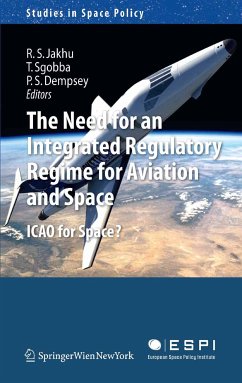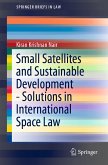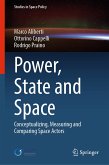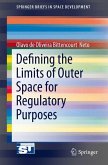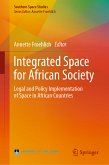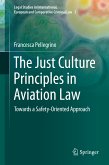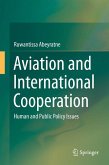The book also highlights the increased reliance of aviation safety on space-based navigation and communication systems, the increasing space systems traffic through the international airspace under the jurisdiction of the ICAO, and the emerging hybrid systems such as aero-spacecraft and space planes, to advocate the practical benefits of directly expanding the ICAO Convention domain beyond the airspace to include outer space up to the geosynchronous orbit.
Dieser Download kann aus rechtlichen Gründen nur mit Rechnungsadresse in A, B, BG, CY, CZ, D, DK, EW, E, FIN, F, GR, HR, H, IRL, I, LT, L, LR, M, NL, PL, P, R, S, SLO, SK ausgeliefert werden.
"This book contains the findings of the study ICAO for Space? ... . The study is concisely set out over five chapters and three Appendices. ... These chapters create a good foundation for the arguments being advanced and also make the book accessible, even for those with little or no background in aviation or space law. ... This book is an interesting read, whatever your view on the need for integration." (Darcy Beamer-Downie, Aerospace, July, 2013)
"The book is an interesting, well documented and well-structured piece of work. ... a useful repository of knowledge and information and could be commended as a necessary addition to an aerospace law library. ... book is a good starter for discussion and is worth a read. It brings to bear the challenges and pitfalls with which an exercise in creating a regulatory regime for commercial air transport would be encumbered. For this reason the protagonists of the study and the book have to be commended." (Ruwantissa Abeyratne, Zeitschrift für Luft- und Weltraumrecht, Vol. 62 (2), 2013)

